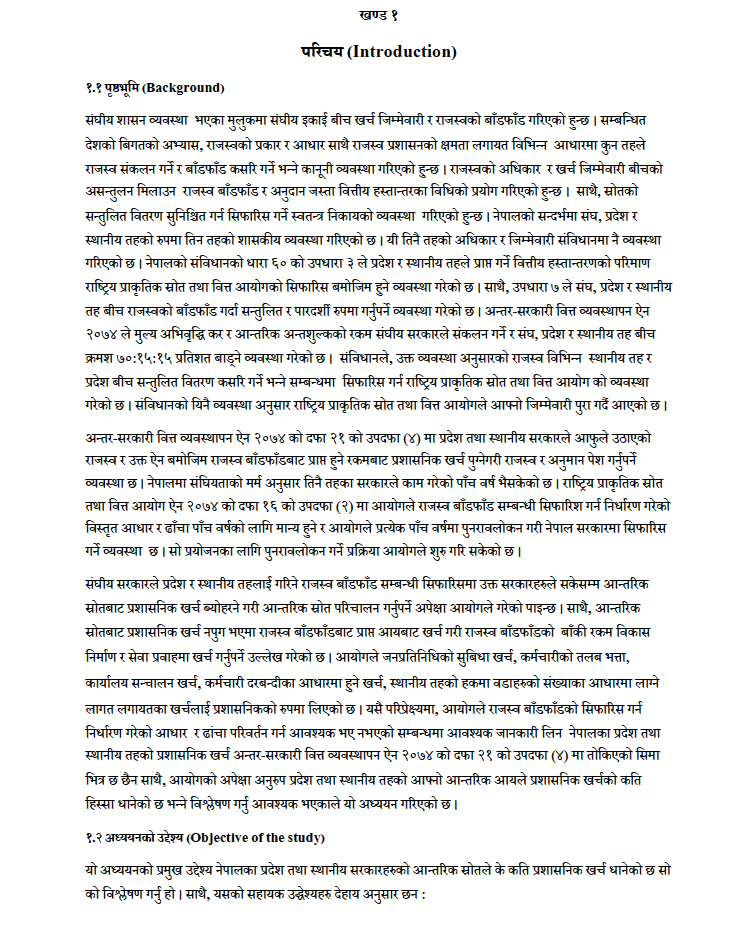In Nepal’s federal system, responsibilities for revenue collection and expenditure are shared among the federal, provincial, and local governments. To manage imbalances between revenue authority and expenditure needs, the Constitution and related laws have established mechanisms for revenue distribution, grants, and financial transfers. Article 60(3) of the Constitution requires that financial transfers to provinces and local levels be based on recommendations of the National Natural Resources and Finance Commission (NNRFC). Similarly, Article 7 ensures that such distribution is carried out transparently and fairly. The Intergovernmental Finance Management Act, 2074, further specifies that value-added tax and internal revenue are to be shared among the federal, provincial, and local levels in the ratio of 70%, 15%, and 15% respectively.
The NNRFC plays a central role in recommending equitable revenue distribution among the three tiers of government. It is also tasked with reviewing its framework and basis for distribution every five years. In its recommendations, the Commission encourages provincial and local governments to rely on internal sources as much as possible for covering administrative costs. Administrative expenditures include salaries, allowances, office operation costs, staffing-related expenses, and ward-level costs. When internal revenues fall short, remaining administrative expenses, as well as spending for development and service delivery, are expected to be covered by revenue transfers from the federal government.
This study has been conducted to assess the extent to which provinces and local governments are able to finance their administrative expenditures from internal revenues. It also aims to compare administrative expenditures with income collected from internal sources and revenue sharing, analyze their ratios, and identify whether such expenditures are being financed through other sources. Ultimately, the findings are intended to generate useful insights to support more equitable and evidence-based revenue distribution decisions between provincial and local governments in Nepal.
